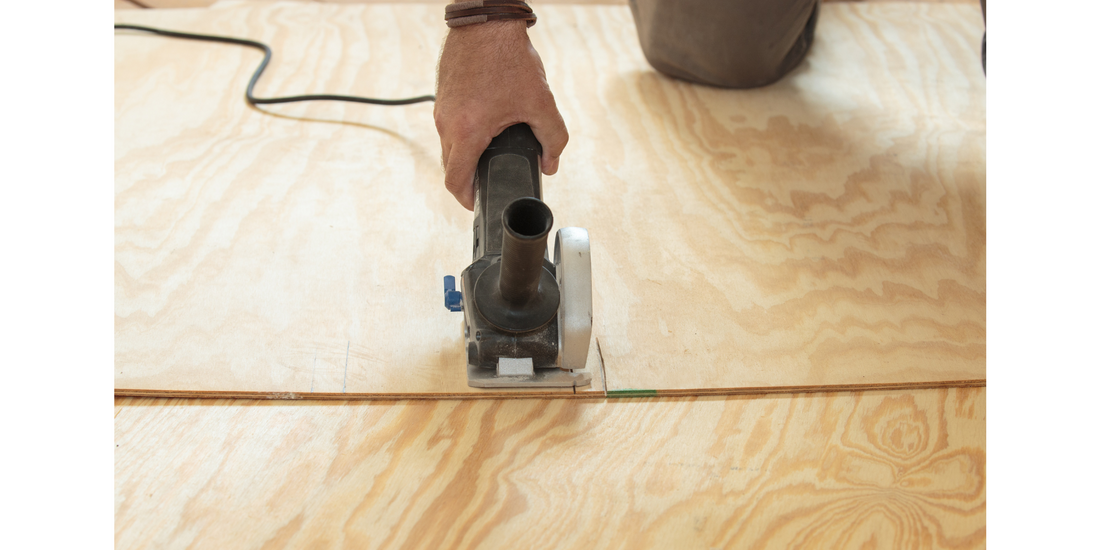
Why We Check Your Subfloors (and How It Can Affect Your Flooring Quote)
Share
Let’s talk about something that doesn’t get much attention but makes a huge difference in how your new Lake County, IL floors turn out: your subfloor. Think of it as the foundation for your flooring—if it’s not solid and level, your beautiful new floors won’t look or feel right. That’s why here at Lotus Home Improvement, we always do a thorough subfloor assessment before we start any floor installation.

Why Subfloor Assessments Matter
Most homes in Chicago's north shore need some kind of subfloor prep before new flooring goes in. We’re talking about leveling things out, fixing creaks, or dealing with moisture issues. Manufacturers actually have specific requirements—like the subfloor needing to be within 3/16" of level over an 8-foot span—and we make sure everything meets those standards. But here’s the thing: we can’t see what’s going on with your subfloor until the old flooring comes up.
If you already know about any issues, like squeaks, bouncy spots, or soft areas, give a heads-up to the flooring contractor when they come out to measure. It helps us plan ahead!

Common Subfloor Issues We See
1. High and Low Spots in Concrete
If you’ve got a concrete floor (especially if it was under carpet), there’s a good chance it needs some leveling. Carpet hides a lot of imperfections that hard flooring can’t. Sometimes we can spot-fix small areas, but other times the whole floor needs leveling. Your Flooring Consultant will walk you through what’s needed.
2. Squeaks and Creaks
Whether your home is brand-new or decades old, squeaky floors happen. Usually, it’s the subfloor pulling away from the framing. If we know about it early, we can secure those spots to quiet things down. Sometimes, though, the noise is from something deeper that we can’t fully fix—but we’ll always let you know.
3. Uneven Plywood
In places like the Midwest, where homes are often built during the colder seasons, plywood subfloors can swell and warp. We smooth things out by sanding down the seams and high spots, and sometimes we’ll need to fill in low areas with a concrete compound.
4. Sinking Floors
Spongy or sinking spots usually mean water damage or poor installation. If it’s water damage, we can remove the affected area and replace it with new plywood. If it’s a bigger issue with the subfloor type, we’ll give you a quote for replacing it.
5. Slanting or Sloping Floors
This is common in basements or homes with post-and-beam foundations. For basements, we typically use self-leveling compounds to even things out. For wood subfloors, we might add new plywood in varying thicknesses to correct the slope.

How Subfloor Issues Affect Your Quote
Once we remove your old flooring, we’ll use a level or laser to check the subfloor. Most homes need some work, but costs vary widely. Minor fixes might only run a couple hundred bucks, but a full self-leveling or subfloor replacement could cost $5,000 or more. Plus, changing the subfloor height can affect things like door clearances or transitions between rooms.
Older condos (20+ years) and basement floors often need full self-leveling to get things perfectly flat. And yes, we can self-level over both concrete and plywood.
What is Self-Leveling?
If your home is over 20 years old or has Gyp-Crete, there’s a solid chance it’ll need self-leveling. This is the fastest, most reliable way to create a flat surface for tile, stone, or engineered wood. We use top-notch leveling compounds that not only smooth things out but also work great with radiant heating systems.

The Types of Subfloors We See Most Often
3/4" Plywood
Super durable and common in homes that are 10-30 years old.
3/4" OSB (Oriented Strand Board)
You’ll find this in newer homes, and it plays nicely with most hardwood flooring.
Plank Subfloor (a.k.a. Shiplap)
Typical in homes 30+ years old. These can be hit or miss—sometimes they have tongue-and-groove for extra support, but they usually need more prep.
The Bottom Line
Your new floors will only be as good as the subfloor underneath. 80% of flooring problems come from issues with the subfloor or prep work. By addressing these upfront, you’re saving yourself from headaches down the road. So, when we recommend fixing your subfloor, trust us—it’s all about giving you the best, longest-lasting results!

Got questions about your subfloor or the process? We’re here to help, contact Lotus Home Improvement today for a free consultation. Let’s make sure your new floors look amazing and last for years to come!
